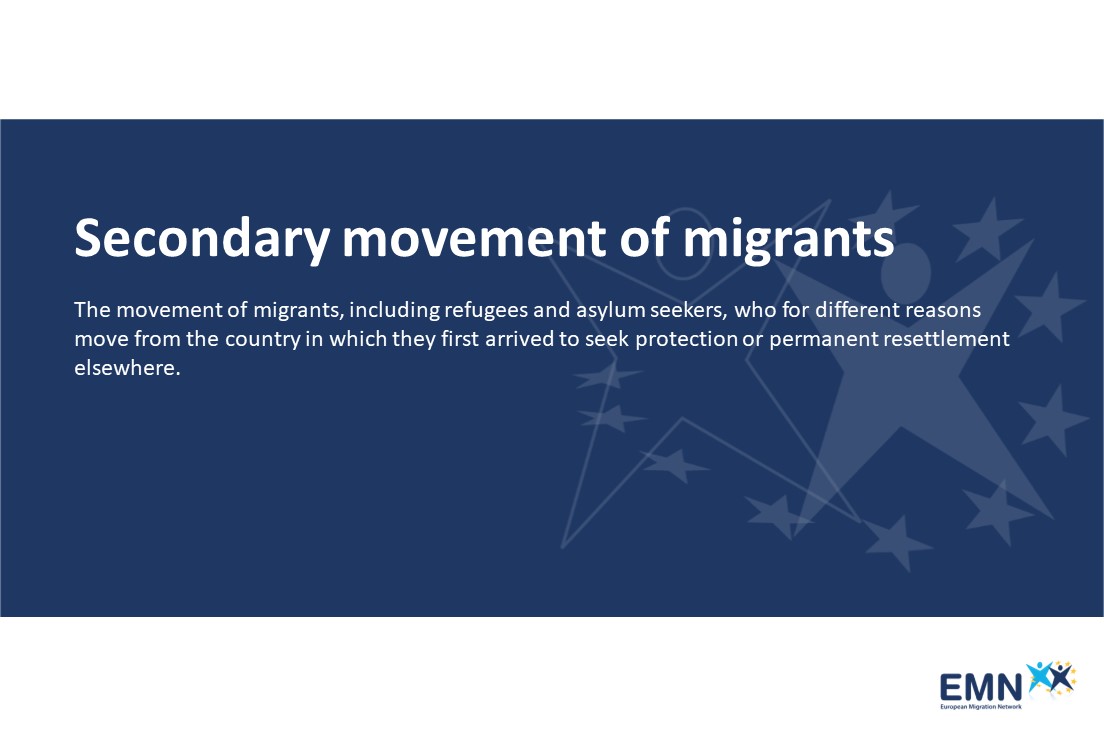
Secondary movement in this particular context refers to the onward migration of beneficiaries of international protection from a first State to a second one, to apply for international protection or to take up legal residence in the second Member State on other grounds (e.g. employment or study). The reasons for moving to another Member State vary and may include: insufficient living conditions and available housing, the presence of ethnic and family networks in another Member State; lack of opportunities for integration; difficult access to work and study and limited access to healthcare and social security in the first State.
This inform covers all persons with either a refugee status or subsidiary protection who are legally present in a second State because they have obtained, or are in the process of obtaining, a valid residence permit, or have made a further application for international protection.
Under the current EU and international legal framework, several options exist for beneficiaries of international protection to travel and reside in another Member State, including short-term forms of mobility under the Schengen Borders Code, intra-EU mobility based on the Directive 2003/109/EC (‘Long-Term Residence’ Directive). However, EU law does not regulate the transfer of responsibility for beneficiaries of international protection. At national level, Member States apply different legal bases, including (i) the European Agreement on Transfer of Responsibility for Refugees (EATRR), (ii) national legislation and/or (iii) bilateral agreements, for the transfer of responsibility of beneficiaries of international protection.
